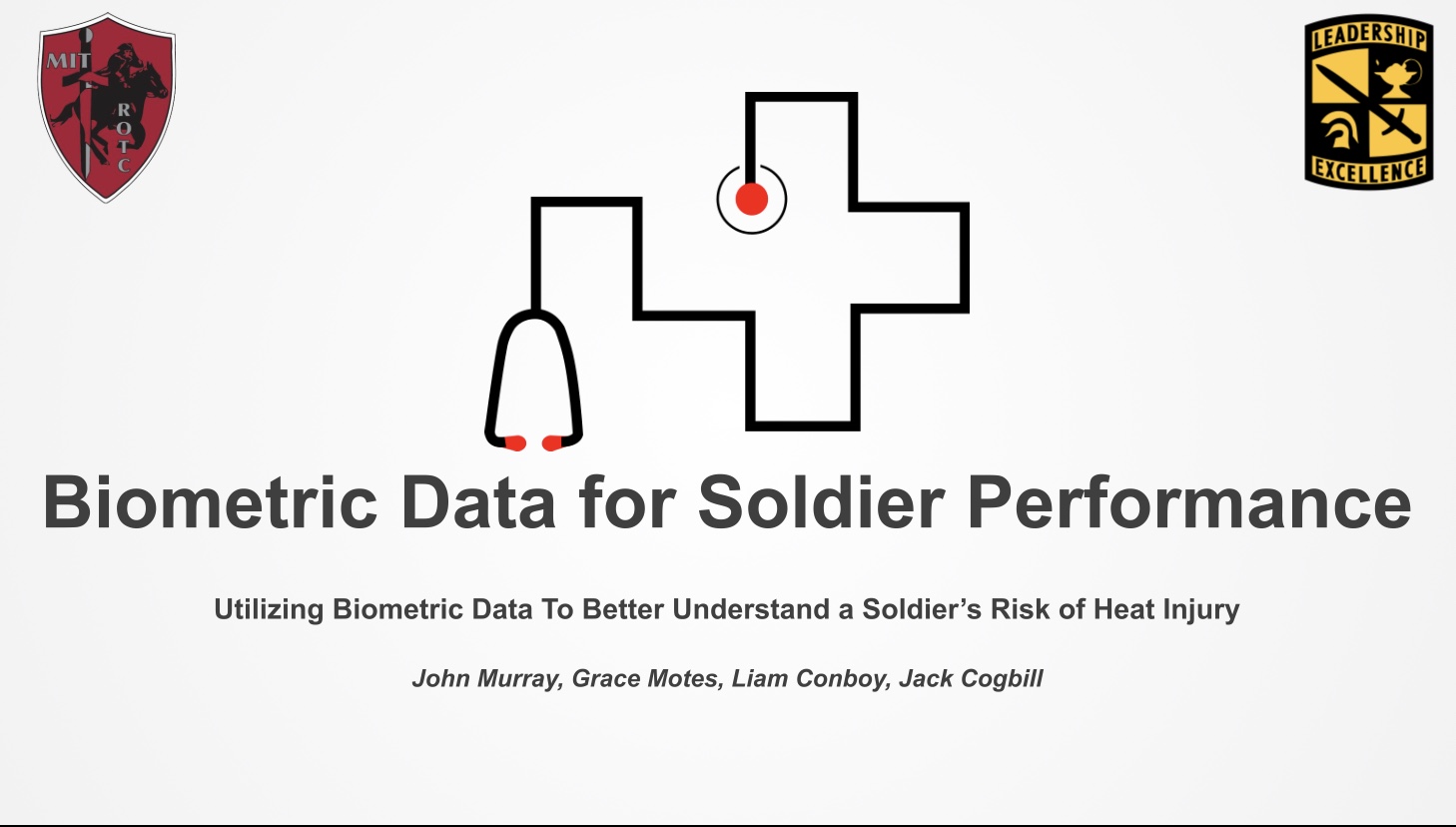Abstract
Wearable devices are extremely prevalent these days and they collect a myriad of data. However, what good is this biometric data if we don't understand what it means or if this data is not presented to us in an informative way? To tackle this issue, our team has focused on creating a program that would take a few of these data points that are collected by a Garmin watch in conjunction with a soldier's baseline body metrics (weight, gender, etc..) to provide an informative summary of their performance and readiness. Specifically, we have first decided to create a program that identifies a soldier's relative risk to heat injury based on a suggestion by USASOC at the MIT ROTC Hackathon weekend back in October.
Problem Statement
Since many operators and soldiers from USASOC are training and deploying at such a high tempo, longevity and readiness are crucial. We see our program as an essential tool to help aid soldiers and operators as they prepare for their various missions and tasks. Heat injury is continually stressed throughout the Army top to bottom, so we wanted to create a program that would identify a soldier or operator's relative risk to heat injury based on how they are performing before it even occurs. Our program will help keep people in the fight and will provide an informative narrative based on loads of data that is collected by the watch that many operators and soldiers are already wearing. Additionally, we see our initial Heat Injury relative risk program as a proof of concept for many other programs that can be derived using various biometric data points, displaying reasoning for a more robust wearable device program.
Proposal
The Soldier Health Metric Dashboard is a smartphone app that allows an organization to track the health information of all of the organization's soldiers in real-time. Soldiers can wear devices, like smart watches, that keep track of their physical health data. That physical health data is fed into an algorithm that calculates the injury risk level of each individual soldier. The Soldier Health Metric Dashboard app then reads the injury risk score calculation for each individual soldier and displays that data in an easy-to-understand way. The end-users of the app (Platoon leaders, Squad leaders, etc...) can then receive alerts and notifications to their smartphone devices when a given soldier's heat injury risk score is above the acceptable level, and they can then use the app to view that soldier's health data and see the reason why their injury risk score is above the acceptable level.
Challenges and Unknowns
Our biggest challenge/unknown is the accuracy of the algorithm since we have not been provided with any data sets so far. If we were given data sets, we would be able to use them to fine-tune our algorithm so that the heat injury relative risk is as informative as possible.

 OUSD Research and Engineering
OUSD Research and Engineering  West Point
West Point
Comments
kcole | 8 February 2021
There is an obvious parallel…
There is an obvious parallel here to firefighter rehabilitation on a fire scene. To my experience, this is all done with manual intervention by EMTs on the fire ground. In Massachusetts (and likely elsewhere) a two-bottle rule is applied after which periodic rehab occurs and stable vital signs are required for re-entry - however firefighters have been known to avoid rehab stations to stay in the fight and cardiac events are still one of the leading causes if line-of-duty deaths in the fire service. A device like this could have benefits beyond soldier health to stressful occupations.
DFreinberg | 9 February 2021
I agree with "Kcole" the…
I agree with "Kcole" the applicability here is certainly larger than the special operations community - think athletes and anyone in the uniformed services too.
dBlocher | 9 February 2021
I agree with your assessment…
I agree with your assessment that a big challenge would be the accuracy of the algorithm. It might also be more challenging than that - A fundamental question that DFEINBERG mentioned is what are the right signals to monitor - is it just body temperature over time? What about fluid intake?
atindall | 20 February 2021
Awesome idea and definitely…
Awesome idea and definitely how we need to think in reference to soldier performance. Some thoughts after reading the proposal and comments, feel free to reach out to chat more.
https://www.arm.com/campaigns/arm-tinyml?utm_source=linkedin&utm_medium=social-paid&utm_campaign=2020_ai-ml-ecosystem_mk09-5_1000heads_social-prospecting_linkedin_na&utm_term=algorithm-provider&utm_content=image-tinymlimage-developer&li_fat_id=896714e3-8074-48f6-a6ad-40bd37974675
And some relatively cheap NVIDIA devices:
https://developer.nvidia.com/embedded/jetson-nano-developer-kit
Again, happy to chat more about these
Hope this helps stimulate some design thoughts, would love to connect and chat more about some other challenges I think are on the horizon here – feel free to reach out at atindall@mit.edu